News
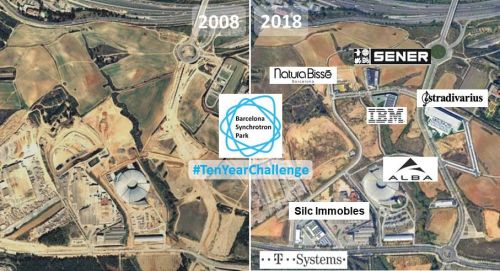
08/02/2019
Barcelona Synchrotron Park’s #10YearChallenge
Barcelona Synchrotron Park’s #10YearChallenge
Let’s take advantage of the # 10YearChallenge phenomenon recently appeared on the social networks, which consists of publishing next to the other two photos of the same person made with 10 years of difference, to apply it to our Park (see image).
On this montage, it can be seen how, between 2008 and 2018, Barcelona Synchrotron Park (BSP) has become a reality with the installation of different companies, among them, the iconic Alba synchrotron operating since 2012.
Undoubtedly, the crisis slowed down the realization of more projects, however, the arrival next month of April of Natura Bissé to occupy its new corporate headquarters reflects the new dynamics that BSP lives thanks to the quality of its offer.
In addition to its high level infrastructures (own 200 MVA electric substation connected to the Spanish grid (220 kV), district heating and cooling, seven telecom operators with their own networks, Data Centers, etc.), the main asset BSP can offer to worldwide companies is its environment conducive to innovation.
We obviously find there the ALBA synchrotron, the largest scientific facility in south-western Europe; the UAB university with 4,000 researchers in 30 research centers and its PRUAB technology transfer and incubation center; the EURECAT technology center; the ESADE business school and its ESADE Creapolis business and incubator center… and a dense industrial fabric of more than 10,000 companies within a 5km radius around ALBA.
The # 15YearChallenge will necessarily be very exiting!
On this montage, it can be seen how, between 2008 and 2018, Barcelona Synchrotron Park (BSP) has become a reality with the installation of different companies, among them, the iconic Alba synchrotron operating since 2012.
Undoubtedly, the crisis slowed down the realization of more projects, however, the arrival next month of April of Natura Bissé to occupy its new corporate headquarters reflects the new dynamics that BSP lives thanks to the quality of its offer.
In addition to its high level infrastructures (own 200 MVA electric substation connected to the Spanish grid (220 kV), district heating and cooling, seven telecom operators with their own networks, Data Centers, etc.), the main asset BSP can offer to worldwide companies is its environment conducive to innovation.
We obviously find there the ALBA synchrotron, the largest scientific facility in south-western Europe; the UAB university with 4,000 researchers in 30 research centers and its PRUAB technology transfer and incubation center; the EURECAT technology center; the ESADE business school and its ESADE Creapolis business and incubator center… and a dense industrial fabric of more than 10,000 companies within a 5km radius around ALBA.
The # 15YearChallenge will necessarily be very exiting!
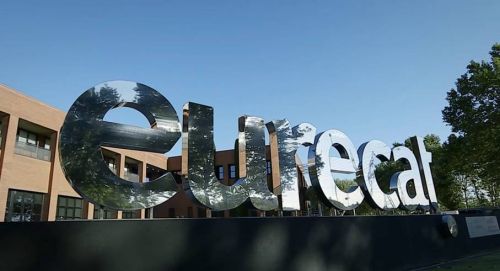
01/02/2019
Eurecat, a provider of innovative technologies
Eurecat, a provider of innovative technologies
With more than 650 people in 11 centers throughout Catalonia, the Eurecat technology center aims to be a provider of innovative technology to help companies, especially SMEs, innovate and be more competitive, acting as a bridge between the world of applied research and the economic fabric.
One of these 11 centers is located right next to the Barcelona Synchrotron Park (BSP). It is one of the largest Eurecat centers and concentrates a large part of the industrial innovation, a precious opportunity for BSP’s companies. This center houses, among other services, the Plastic Processing Pilot Plant, a worldwide reference in plastics transformation and the largest in southern Europe.
From composites to robotics, from the development of new products to manufacturing processes, from Big Data to e-health, Eurecat provides answers to many sectors, from textiles to food, from financing to automotive, etc.
The news of the last days found on the Eurecat website gives an idea of the wide range of know-how offered:
- "Aritex company and Eurecat help Airbus test a wing to reduce CO2 emissions"
- "Eurecat leads a European technological project for human-robot collaboration in the industry"
- "Biomechanical sensors are applied to improve the monitoring of neuromuscular diseases"
- "Embutidos Salgot and Eurecat investigate the development of more heart-healthy pork products"
One of these 11 centers is located right next to the Barcelona Synchrotron Park (BSP). It is one of the largest Eurecat centers and concentrates a large part of the industrial innovation, a precious opportunity for BSP’s companies. This center houses, among other services, the Plastic Processing Pilot Plant, a worldwide reference in plastics transformation and the largest in southern Europe.
From composites to robotics, from the development of new products to manufacturing processes, from Big Data to e-health, Eurecat provides answers to many sectors, from textiles to food, from financing to automotive, etc.
The news of the last days found on the Eurecat website gives an idea of the wide range of know-how offered:
- "Aritex company and Eurecat help Airbus test a wing to reduce CO2 emissions"
- "Eurecat leads a European technological project for human-robot collaboration in the industry"
- "Biomechanical sensors are applied to improve the monitoring of neuromuscular diseases"
- "Embutidos Salgot and Eurecat investigate the development of more heart-healthy pork products"
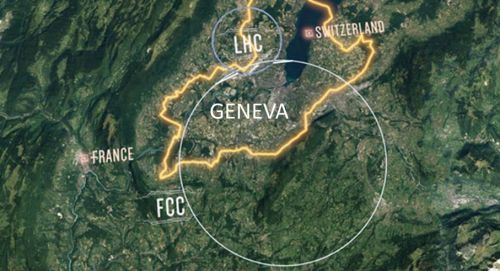
25/01/2019
ALBA Synchrotron’s expertise involved in the design of two scientific facilities
ALBA Synchrotron’s expertise involved in the design of two scientific facilities
On 1st January 2019, the European Horizon 2020 project BEATS (BEAmline for Tomography at SESAME) was launched with the objective to design, procure, construct and commission a beamline for X-ray tomography at SESAME synchrotron (Jordan), the first light-source laboratory in the Middle East (SESAME's Members are, Cyprus, Egypt, Iran, Israel, Jordan, Pakistan, Palestine and Turkey).
Led by the ESRF, the European synchrotron (France), BEATS involves leading research facilities in the Middle East (SESAME and the Cyprus Institute), and 7 European synchrotron radiation facilities including ALBA Synchrotron.
Two beamlines are presently installed at SESAME, one more beamline is being installed and components for a fourth beamline are being procured; BEATS will be the fifth beamline, dedicated to tomography. Today, there is significant interest from the cultural heritage and archaeology communities for such a beamline. The project will also explore applications in environmental and materials sciences with links to industries in the region.
On the other hand, the Future Circular Collider (FCC) collaboration, where ALBA also takes part in, has submitted its Conceptual Design Report (CDR) for publication, a comprehensive document that presents the different options for a large circular collider (100 km) that would succeed the LHC (27 km) actually operating at CERN under the French-Swiss border (see picture) and would be able to significantly expand our knowledge of matter and the universe.
Led by the ESRF, the European synchrotron (France), BEATS involves leading research facilities in the Middle East (SESAME and the Cyprus Institute), and 7 European synchrotron radiation facilities including ALBA Synchrotron.
Two beamlines are presently installed at SESAME, one more beamline is being installed and components for a fourth beamline are being procured; BEATS will be the fifth beamline, dedicated to tomography. Today, there is significant interest from the cultural heritage and archaeology communities for such a beamline. The project will also explore applications in environmental and materials sciences with links to industries in the region.
On the other hand, the Future Circular Collider (FCC) collaboration, where ALBA also takes part in, has submitted its Conceptual Design Report (CDR) for publication, a comprehensive document that presents the different options for a large circular collider (100 km) that would succeed the LHC (27 km) actually operating at CERN under the French-Swiss border (see picture) and would be able to significantly expand our knowledge of matter and the universe.
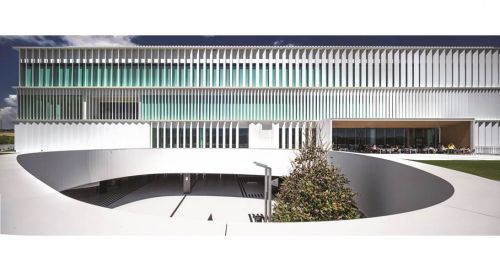
18/01/2019
Stradivarius will launch perfumes
Stradivarius will launch perfumes
Stradivarius, which arrived at Barcelona Synchrotron Park in 2017 with the opening of its new world headquarters designed by Batlle i Roig (see photo), had closed the financial year of that year with 1,480 million euros in overall sales, 10% more than in 2016, and with 1,017 stores spread across more than 70 international markets and a website available in 32 markets.
At the end of last year, Sofia Ellar singer was commissioned to inaugurate in Bilbao the most cutting edge and innovative establishment of the Inditex group, a 650 m2 eco-efficient store in terms of water and electricity consumption.
Also in December, Stradivarius announced its alliance with Cristian Lay to launch perfumes. Although the chain had already had small collections of perfumes in the past, its alliance with Perseida, owned by Cristian Lay, is to take a step forward in this category.
At the end of last year, Sofia Ellar singer was commissioned to inaugurate in Bilbao the most cutting edge and innovative establishment of the Inditex group, a 650 m2 eco-efficient store in terms of water and electricity consumption.
Also in December, Stradivarius announced its alliance with Cristian Lay to launch perfumes. Although the chain had already had small collections of perfumes in the past, its alliance with Perseida, owned by Cristian Lay, is to take a step forward in this category.
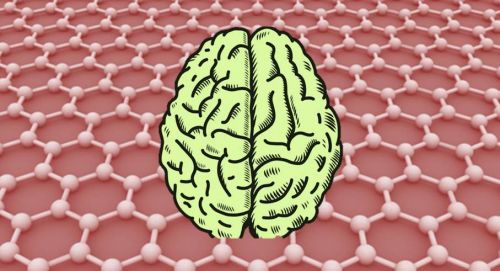
11/01/2019
Graphene-based implant developed by IMB and ICN2 on UAB campus records brain activity
Graphene-based implant developed by IMB and ICN2 on UAB campus records brain activity
In the graphite tip of a pencil, carbon atoms are arranged in a layered, planar structure forming a honeycomb lattice. Graphene is one of these sheets with only one atom thick.
Within a few years, graphene has become the prime example of a promising material for its numerous properties: resistant and light, flexible and elastic, transparent, conductor of heat and electricity, etc. Graphene has already been awarded a Nobel Prize in 2010 and Graphene Flagship is one of the two current key scientific initiatives of the European Union (Humain Brain Project is the other one) that gathers 142 academic and industrial groups from 23 different countries with 1 billion Euros in funding over the 2013-2023 period.
In this context, researchers in Barcelona have developed a graphene-based implant able to record electrical activity in the brain at extremely low frequencies and over large areas. The prototype was developed at the Barcelona Microelectronics Institute (IMB-CNM, CSIC) and the Catalan Institute of Nanoscience and Nanotechnology (ICN2, a BIST and CSIC centre), both on the Barcelona Synchrotron Park’s UAB campus partner, and was adapted for brain recordings in collaboration with the August Pi i Sunyer Biomedical Research Institute (IDIBAPS).
Published in Nature Materials, the ground-breaking technology promises to enhance the understanding of the brain and pave the way for the next generation of brain-computer interfaces.
More information
Within a few years, graphene has become the prime example of a promising material for its numerous properties: resistant and light, flexible and elastic, transparent, conductor of heat and electricity, etc. Graphene has already been awarded a Nobel Prize in 2010 and Graphene Flagship is one of the two current key scientific initiatives of the European Union (Humain Brain Project is the other one) that gathers 142 academic and industrial groups from 23 different countries with 1 billion Euros in funding over the 2013-2023 period.
In this context, researchers in Barcelona have developed a graphene-based implant able to record electrical activity in the brain at extremely low frequencies and over large areas. The prototype was developed at the Barcelona Microelectronics Institute (IMB-CNM, CSIC) and the Catalan Institute of Nanoscience and Nanotechnology (ICN2, a BIST and CSIC centre), both on the Barcelona Synchrotron Park’s UAB campus partner, and was adapted for brain recordings in collaboration with the August Pi i Sunyer Biomedical Research Institute (IDIBAPS).
Published in Nature Materials, the ground-breaking technology promises to enhance the understanding of the brain and pave the way for the next generation of brain-computer interfaces.
More information

03/01/2019
CREAF: 30 years in environmental sciences
CREAF: 30 years in environmental sciences
CREAF, Ecological and Forestry Applications Research Center, which works in the field of terrestrial ecology, especially forestry, in order to improve planning and management of the natural, rural and urban environment, celebrates its 30th anniversary this year.
The anniversary of this 130-researcher institute located on the campus of the Autonomous University of Barcelona (UAB), partner of the Barcelona Synchrotron Park (BSP), is a good excuse to remember the powerful CERCA research centers network which CREAF is involved in and the commitment to biodiversity protection shared by both CREAF and BSP.
Catalonia has developed its own research system based mainly on a talent attraction agency (ICREA) and a network of 40 research centers (CERCA), 6 of which are on the UAB campus, that is to say into the BSP’s sphere: in addition to CREAF, ICN2 (Catalan Institute of Nanoscience and Nanotechnology), IFAE (Institute for High Energy Physics), CRAG (Centre for Research in Agricultural Genomics), CVC (Computer Vision Centre) and ICP (Catalan Institute of Palaeontology).
Regarding biodiversity, one of the four research areas of the center (together with Earth Observation, Global Change and Ecosystem functioning), CREAF studies the mechanisms which generate and maintain biodiversity in terrestrial ecosystems and analyzes the factors which threaten it. CREAF works with species and communities of plants and animals, with studies carried out from the molecular to ecosystem scale.
This commitment is also that of BSP with its emblematic 140-hectare green corridor where actions for biodiversity protection are carried out: they are included in this document and awarded by the Business & Biodiversity label of the European Commission.
Congratulations, CREAF!
The anniversary of this 130-researcher institute located on the campus of the Autonomous University of Barcelona (UAB), partner of the Barcelona Synchrotron Park (BSP), is a good excuse to remember the powerful CERCA research centers network which CREAF is involved in and the commitment to biodiversity protection shared by both CREAF and BSP.
Catalonia has developed its own research system based mainly on a talent attraction agency (ICREA) and a network of 40 research centers (CERCA), 6 of which are on the UAB campus, that is to say into the BSP’s sphere: in addition to CREAF, ICN2 (Catalan Institute of Nanoscience and Nanotechnology), IFAE (Institute for High Energy Physics), CRAG (Centre for Research in Agricultural Genomics), CVC (Computer Vision Centre) and ICP (Catalan Institute of Palaeontology).
Regarding biodiversity, one of the four research areas of the center (together with Earth Observation, Global Change and Ecosystem functioning), CREAF studies the mechanisms which generate and maintain biodiversity in terrestrial ecosystems and analyzes the factors which threaten it. CREAF works with species and communities of plants and animals, with studies carried out from the molecular to ecosystem scale.
This commitment is also that of BSP with its emblematic 140-hectare green corridor where actions for biodiversity protection are carried out: they are included in this document and awarded by the Business & Biodiversity label of the European Commission.
Congratulations, CREAF!









